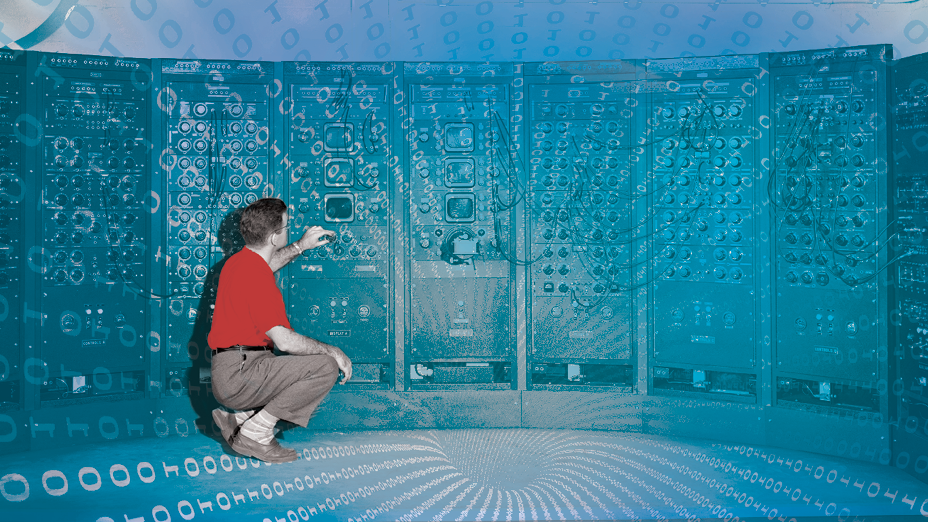Just the announcement that Jeff Bezos, Warren Buffett, and Jaime Dimon will be entering the health care space has sent shock waves for industry incumbents such as CVS, Cigna, and UnitedHealth. It also puts a fundamental question back on the agendas of CEOs in other industries: Will software eat the world, as Marc Andreessen famously quipped? Is this a warning shot that signals that other legacy industrial companies, such as Ford, Deere, and Rolls Royce are also at increased risk of being disrupted?
To start to answer that question, let’s tally up the score. There are three types of products today. Digital natives (Amazon, Google, Facebook, Microsoft, IBM) have gained competitive advantage in the first two, and the jury is still out on the third:
Type 1
These are “pure” information goods, where digital natives rule. An example would be Google in search, or Facebook in social networking. Their business models benefit from internet connectivity and they enjoy tremendous network effects.
Type 2
These are once-analog products that have now been converted into digital products, such as photography, books, and music. Here too, digital natives dominate. These products are typically sold as a service via digital distribution platforms (Audible.com for books, Spotify for music, Netflix for movies).
Type 3
Then there are products where inputoutput efficiency and reliability of the physical components are still critical but digital is becoming an integral part of the product itself (in effect, computers are being put inside products). This is the world of the Internet of Things (IOT) and the Industrial Internet.
Manufacturing-heavy companies such as Caterpillar, Ford, and Rolls Royce compete in this world. An aircraft engine is unlikely to become a purely digital product any time soon! Such products have three components: physical components, “smart” components (sensors, controls, microprocessors, software, and enhanced user interface), and connectivity (one machine connected to another machine; one machine connected to many machines; and many machines connected to each other in a system).
Digital natives have already disrupted industries such as media, publishing, travel, music, and photography. But who is likely to assume leadership in creating and capturing economic value in Type 3 products: Digital natives or industry incumbents? Ford or Tesla? Rolls Royce or IBM? Caterpillar or Microsoft? Amazon, Berkshire Hathaway and JPMorgan Chase combine or UnitedHealth?
The Challenges for Digital Natives
Value will no doubt be created in the era of smart, connected machines. We don’t expect Amazon or Microsoft or IBM to design, make, and market agricultural tractors, aircraft engines, or MR scanners. The question really is: Can digital natives develop softwareenabled solutions that siphon off significant value from industrial hardware? The answer is “yes.” But it won’t be easy. It will require tremendous amounts of investments in building new capabilities for hardware companies like HP, Cisco, Dell, Samsung, and Lenovo; established software companies like Facebook, Google, Amazon, and Microsoft; and start-ups. In particular, there are three barriers they must overcome:
1. The Physics of hardware
Companies like Rolls Royce design and manufacture jet engines. These are very complicated machines. There is hard science behind these machines. That’s much different than digital natives like Airbnb where marketing is more important than technical expertise.
Industry incumbents have expertise in the material sciences, for instance. Further, scientific knowledge keeps improving over time. They have made heavy R&D investments—both basic and applied—to remain at the cuttingedge of the physics of the hardware. Much of this scientific knowledge is protected by patents.
Mastery of hard science is a pre-requisite to develop softwarebased solutions on the hardware. These companies’ superior product/ domain knowledge provides them the comparative advantage to model the asset’s performance and write high-end/high value-added software applications. A “pure” digital company can write commodity software applications. But it must acquire enough capabilities on the physics to write sophisticated apps that improve assets’ performance.
2. Customer intimacy
Industrial giants have well-established brands, built strong customer relationships, and signed longterm service contracts. They’ve won the customer ’s trust, which is why customers are willing to share data. Digital natives can work with industrial customers, but they have to first earn their trust; they must build capabilities to understand customer operations; they must match the industrials’ cumulative learning from customer interactions; they must learn to ask for the right data; and they have to hire experts in several verticals that can turn data into insights.
3. Difficulty in sharing risks
Industrial incumbents have product knowledge, customer relationships, and field engineers on customer sites. Companies like Rolls Royce can, therefore, offer outcome deals where they guarantee customer outcomes (examples: zero downtime, higher speed, more fuel efficiency, zero operator error, greater reliability) and share risks and rewards with customers. It would be very hard for Amazon or Google to guarantee customer outcomes and take risks with businesses whose operations they know little about.
The Challenges for Industrial Giants
Can the industrial giants lead in the Industrial Internet? The answer is “yes.” But it won’t be easy for them, either. They too have three significant barriers to overcome:
1. Software Talent
The IT talent in industrial companies can execute projects oriented towards process efficiency and cost reduction. That talent is ill-suited to develop new, breakthrough software products that offer superior customer outcomes. For that end, they must be able to attract world-class innovators and software engineers. Is, say, Rolls Royce, in the same consideration set as Facebook and Google for young tech employees? Not, really. If so, how can the industrial giants compete to attract the best talent?
2. Digital Culture
Industrial businesses and digital businesses operate with completely different principles. The characteristics of hardware businesses include long product development cycle, Six Sigma efficiency, and long sales cycle. Software businesses have different characteristics: short product development cycle, flexibility, and short sales cycle. The industrials must build a digital culture based on concepts like lean, agile, simplicity, responsiveness, and speed. That’s a tall order for an established enterprise.
3. The Incumbent's Dilemma
Digital has the potential to disrupt industrial businesses. There are three ways digital strategy can cannibalize “core” industrial business. First, data and insights can help improve the productivity of machines; digital, therefore, has the potential to cannibalize future hardware sales. Second, data and insights increase the reliability of machines; digital therefore has the potential to cannibalize future service revenues. Third, software subscription and license might enable customers to do self-service. Current customers could terminate/renegotiate service contracts, and potential customers may not enter into service contracts at all. In short, it is very difficult for a company to disrupt itself. The future of the Industrial Internet will involve partnerships across a variety of players including tech companies and industrial companies. The key issue: Who will assume the leadership position to extract maximum economic value in such an ecosystem? Will industrial companies take the lead? Or will the digital natives take the lead? Both have a chance.
If I were a betting man, I would place my bets on tech giants over industry incumbents. One factor that will favor digital companies in the industrial internet is technological/scientific breakthroughs that level the playing field for newcomers. For example, breakthroughs in battery technology made the electric cars possible. Electric cars are much simpler to design than cars with internal combustion engines, allowing Tesla and BYD to enter the market despite Ford’s decades of expertise. Since electrification and driverless cars go together, other tech companies such as Google, Baidu, Apple, and Lyft will also be able to enter the automotive market. Similar technological changes in jet engines and agricultural tractors can allow tech giants gain foothold in these industries as well.
More importantly, Amazon or Google have the resources to acquire the capabilities to master the physics and acquire customer relationships and compete with the industrial giants in the Industrial Internet. They have enough resources and some to buy them, if needed.
Among the tech giants, Amazon is a likely winner in the Industrial Internet. It has successfully fused physical with digital. Amazon understands the economic laws of analog products and is not afraid of massive up-front investments and slower growth. Its acquisition of Whole Foods and experiments with Amazon Go grocery stores are an example. Amazon is the one company everyone’s scared of, even industrial giants.
This article originally appeared in HBR.




.png)




What Did You Think?